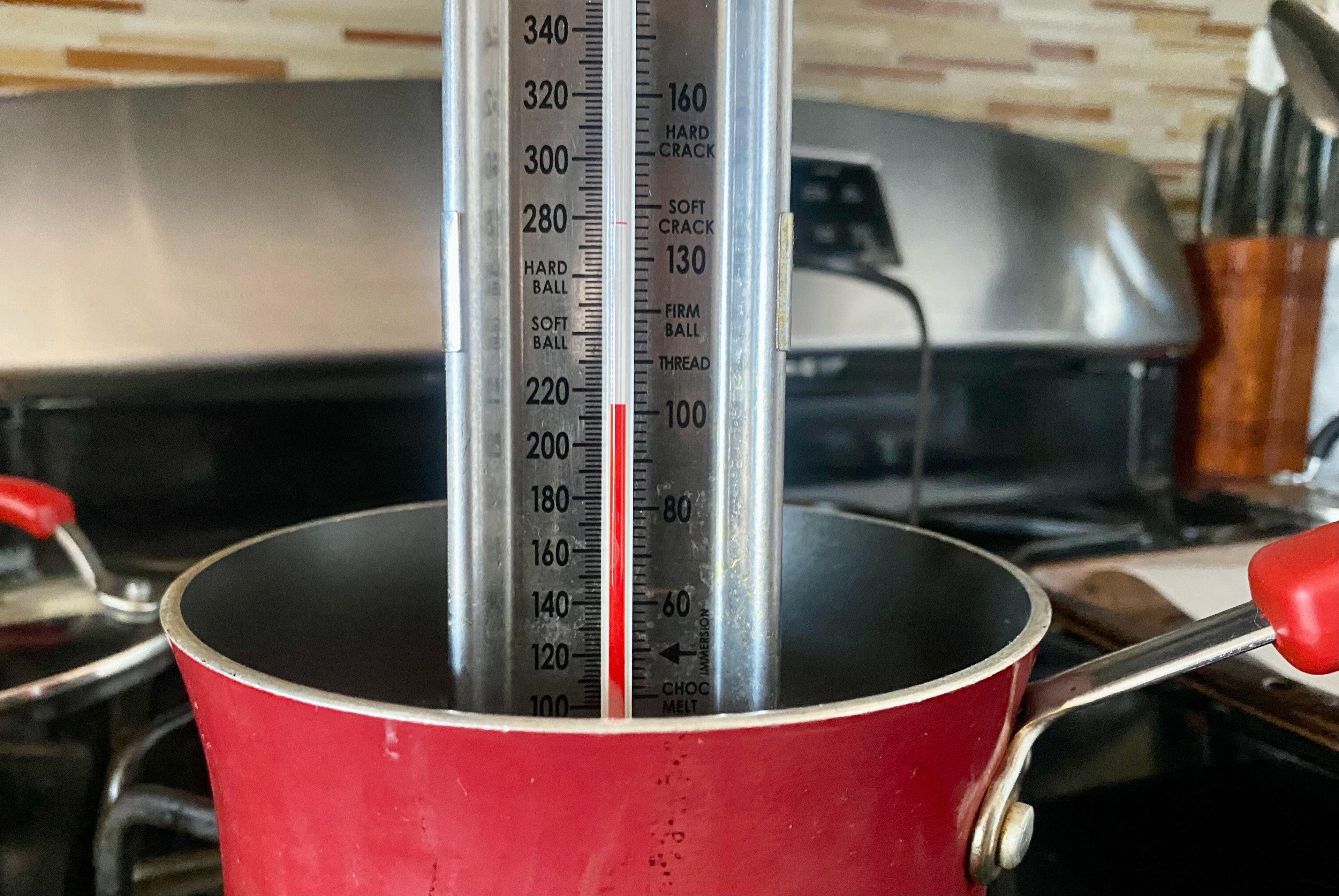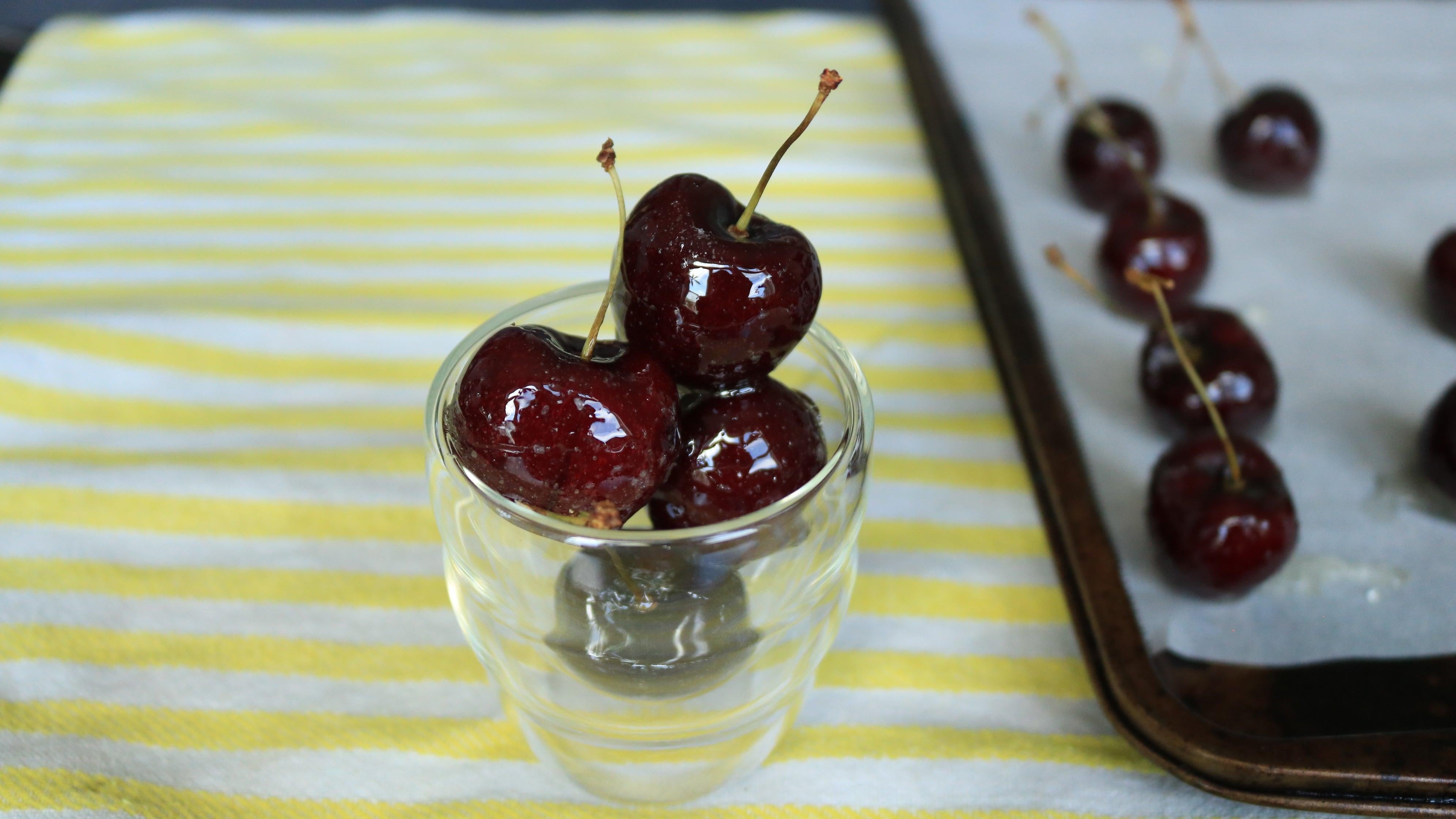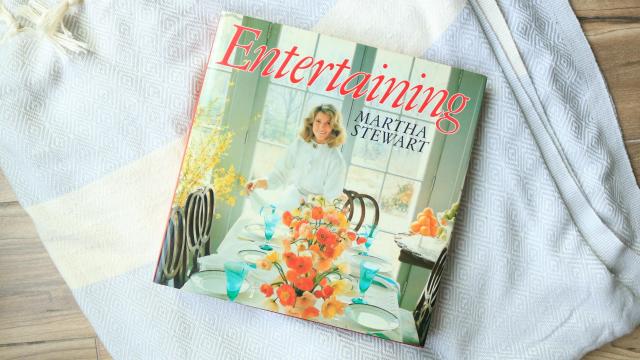I love hosting dinner parties, but I hate host anxiety. To combat this, I’m always looking out for beautiful, impressive recipes that are secretly simple. Ina Garten and Martha Stewart are two chefs, and undeniably fabulous dinner party hosts, who have mastered these types of recipes (I haven’t technically been to one their dinner parties yet, but give me time), and since my mum recently unearthed her copy of Entertaining (1982), a vintage Martha book on throwing together the perfect gathering, I looked to it for advice and found Martha’s easy tip for making an alluring fruit plate–glacé your fruit.
What is glacéed fruit?
Glacéed fruit is essentially raw fruit coated in a sugar glaze, which gives it a glorious, reflective shine. Although the term is French, the technique is used to make an equivalent Chinese street food called Tanghulu, and is likely practiced in many cultural cuisines. Applying this candying technique to fresh seasonal fruits produces elegant results, and they look especially good dotted around a cheese board. An added benefit: the sweetness of the sugar coating can give out-of-season fruit a helping hand, flavour-wise.
To glacé your fruit, make a melted sugar syrup and carefully dip the fruit into it, just long enough to coat. The end. The thin coating of sugar cools within minutes and clings, gleaming, to the surface of the fruit. Pretty simple.
How Martha does it
Martha’s recipe uses strawberries and green grapes, but I tried it with fresh cherries because I happen to have a whole lot. Since you’ll be dipping the fruit in molten sugar that’s over 250 degrees Fahrenheit, fruits with grabbable stems are highly recommended. Cherries, clusters of grapes, and strawberries are all easy to hold and dip. Anything without a stem can be skewered and dipped too. Whatever fruit you favour, take care to drain off most of the sugar, as a big clump of candy is no fun to chew.
The first step is to ready your fruit. Wash and dry it and make sure it’s at room temperature. The goal is to ensure the sugar will adhere smoothly to the fruit’s skin. Any moisture (including condensation from fridge-cold fruit) will evaporate quickly when the fruit is submerged into the super hot sugar, and could lead to potentially dangerous steam splatter, weird cold spots that lower the temperature of the syrup, or (in the best case scenario), little bubbles that slightly blemish the sheen of the glacé. Just start with room temp fruit, ok?

When your fruit is dry and ready, make the hot sugar syrup. Use a small, deep pot and at least one cup of sugar with a couple tablespoons of water. In Martha’s recipe, she uses two cups of sugar to cover several clusters of grapes and a pint of strawberries. You won’t use all of the syrup, but you want there to be a deep enough pool to dip the fruit in quickly and with ease. I don’t know if I told you this, but that sugar is damn hot, and you need to be fast so you don’t cook the fruit.
Boil the mixture on medium high heat, until the steam stops (because all of the water has evaporated), and the bubbles start slowing down and getting bigger. Use a candy thermometer to check the temperature if you aren’t sure. The recipe suggests that you dip the fruit once the syrup reaches 265 degrees Fahrenheit, which in candy terms is called the “hard ball stage.” Dip each fruit just long enough to coat the outside and set it on a greased baking sheet to cool. That’s it as far as Martha’s recipe goes, but I made some adjustments.

I didn’t like how my fruits’ candied surfaces came out. Hard ball stage is best for sticky, chewy candy, like caramels. I love caramel, but this is not it. When you bite the fruit the sugar immediately sticks to every tooth. The cherries also stuck to each other when I tried plating it, which would be horrible in a dinner party situation. Instead, I found cooking the sugar to the “soft crack–hard crack” stage worked better for my cherries. The coating of thin sugar shattered when I bit it, creating a pleasant juxtaposition of textures alongside the soft, ripe fruit. The sugar was crispy instead of chewy, and dissolved in my mouth. The plating process improved as well; the sugar at hard crack isn’t nearly as sticky — unless it gets humid. To prevent this, coat the fruit within an hour or two of when you plan to use it, and it in an air-tight container.
The final change I suggest is to cool the fruit on an oiled drying rack after dipping. Despite my best attempts, some sugar still pooled at the bottom of each cherry when placed on on the parchment-lined baking tray. The drying rack would’ve allowed me to shake off the excess sugar quickly, keeping the coating as thin and smooth as possible.
With those minor edits, this preparation technique is dazzling: a tempting way to present a bounty of summer fruits. If the idea of completely covering fruit in candy makes your teeth ache, you can merely drizzle the syrup over your fruit instead. Just line the fruit up on parchment paper and sprinkle the sugar syrup over them in little drops. The result will be sparkling morsels that appear to have been freshly harvested on a dewy morning.

Leave a Reply
You must be logged in to post a comment.